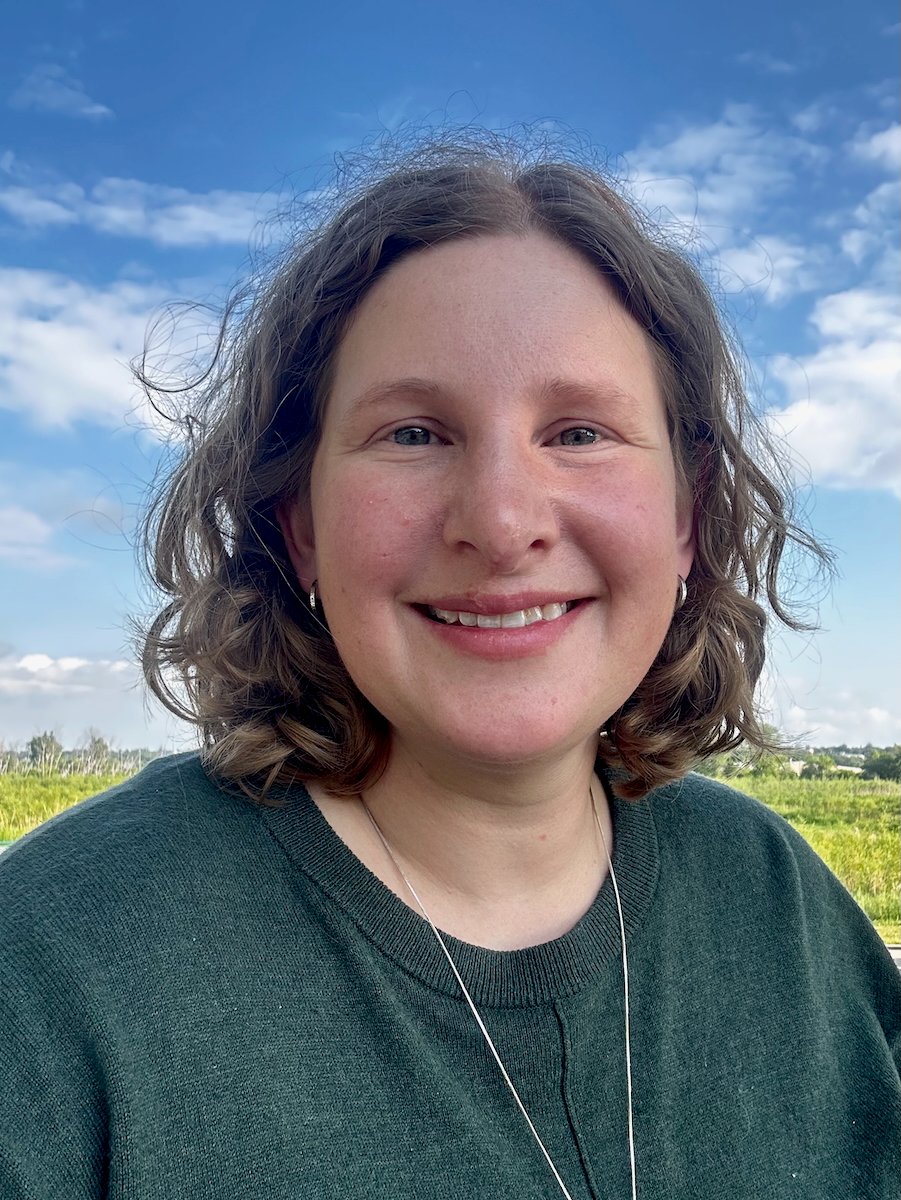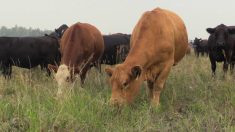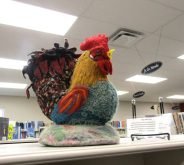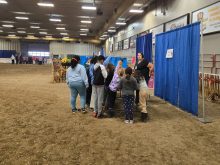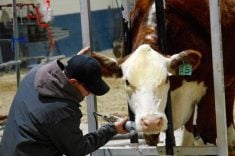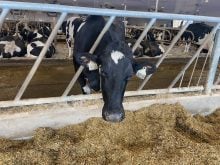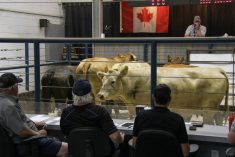A group of Manitoba Shetland breeders hopes the next round of lambs will mark a new era for flock genetics.
Three farms joined forces to give their operations a shot of U.K.-based bloodlines. Ewes underwent laparoscopic artificial insemination with imported semen in mid-December. A fourth farm is slated to receive lambs should the procedures prove successful.
Margaret Brook, one of those breeders and an organizer behind the Manitoba Fibre Festival, noted success is far from assured.
Read Also

Finally getting paid for sustainable farming?
Alberta project says they might have a line on a workable ecosystem credit model to reward farmers for sustainability, and Manitoba might be next
“It all seemed to go very well when we had the procedure done… We’re very hopeful that there will be lambs,” she said. “Of course, the rate of success with AI [artificial insemination] is not the same as when you just use a ram, especially with frozen semen.”
Why it matters: There are few Shetland sheep in Manitoba and a group of local breeders hopes artificial insemination will help build a local source of premium genetics.
Dr. Dinesh Dadarwal, professor at the Western College of Veterinary Medicine, estimated that 50 to 65 per cent of the ewes would have to become pregnant to consider the procedure a success. He flagged a number of issues that could derail AI.
“Usually, when you buy semen from a company that’s exporting or importing semen, they take care of the quality, but as a veterinarian, I try to actually make sure to have a look at the semen,” he said.
He typically orders an extra straw from the same batch to confirm its quality.
[RELATED] Maedi visna: The hidden sheep disease
The other variable is the ewe. Success will depend on the animal’s nutritional status, age and how well the program has matched to its cycle.
“Then, the third thing that comes in is how you process that semen,” said Dadarwal, noting the threat of improper thawing or missing the timeframe in which semen can be used.
The veterinarian who does the AI is yet another variable.
Sheep producers turned to Alberta company OC Flock Management to facilitate the venture. The company specializes in reproduction services in sheep and goats. It helped import the semen and provided an Alberta-based veterinarian on the day of insemination.
Set up for success
A laparoscopic procedure gives better odds of success, Dadarwal said. Sperm is deposited as close to the site of fertilization as possible rather than having to travel from the cervix. At the same time, he noted, the procedure is more specialized, labour intensive and therefore costly than vaginal insemination.
Laparoscopic insemination is a surgical procedure in which animals are sedated. The ewe is restrained and tilted upside down in a cradle for ease of access. With the help of a scope, veterinarians bypass the cervix and inject semen directly into the uterus using several small incisions.
The group of breeders found one Manitoba veterinarian who could do the procedure, but had to find one in Alberta when the Manitoba vet had health issues.
Dadarwal estimated that only a handful of qualified veterinarians practice that type of AI nationally. The college has fielded calls for the service and has done it for some clients, but lacks the resources to regularly provide it.
[RELATED] A look behind the clippers on a sheep farm
New blood
Brook hopes the enterprise will help fill what she says is a gap in local Shetland genetics. The few Prairie breeders are an island in the Shetland community, so it is daunting to find replacement rams or gain new genetics.
“There’s such limited availability of animals locally and, up until now, there hasn’t been a huge interest in breeding stock either for registered farms,” she said.
With so few breeders, sheep sold to commercial flocks are essentially lost to the already tight purebred gene pool, even if that flock is also made up of unregistered Shetland sheep.
The group would like to see more registered flocks.
The shallow breeding pool on the Prairies is part of the already close genetics in the continental Shetland herd, Brook noted.
“There were two importations of Shetland sheep to North America. A very small group came in 1948 and then another group in 1980 of four rams and 28 ewes, so for many years, every Shetland in North America was related to those animals, which is not a very big gene pool,” she said. “There have been a couple of AI imports from the U.K. since then.”
The Shetland breed is mixed use and can be used for meat, although Brook noted that small size makes them less attractive for those markets. The breed is better known as a wool producer.
The group hopes to eventually get better quality rams “who meet the Shetland breed standard in all criteria, not just fleece,” Brook said.
Compared to North American practice, rams in the U.K. undergo more rigorous judging before being accepted for an export program.
Breeders must now wait to see how many lambs they will draw from the project.
“Naturally, we’re hoping for all of them,” Brook said. “That’s probably unrealistic. You could get two or they could all take, and Shetlands usually have twins, so there’s that.”
The producers have chosen not to scan the ewes and will wait to see how many lambs arrive.
About 10 ewes had the procedure in December.
There is also a chance for a second kick at the can, Brook noted. More semen straws are inbound for future breeding.

